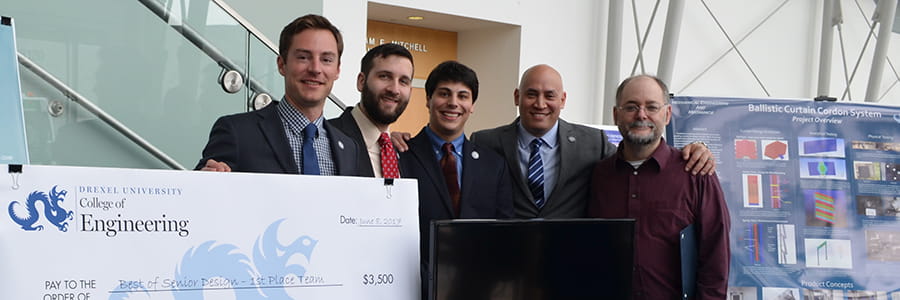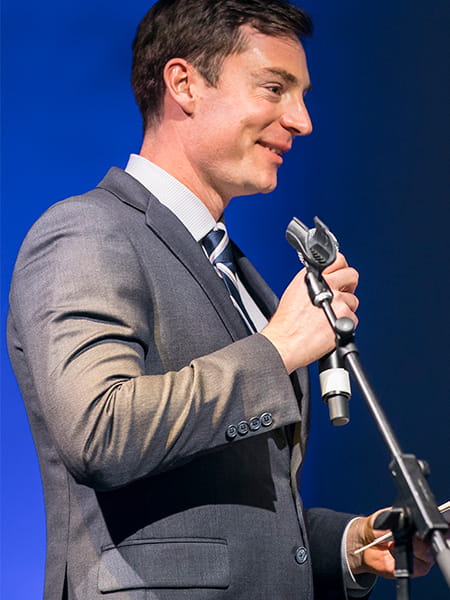Daniel Navin ’17 and James Ostman ’17

When breaking news reports an active shooter rampaging a school or public venue, most people whisper a quick thanks that they and their loved ones are far away and safe.
Daniel Navin, an Iraq veteran Army sniper and ballistics specialist, thinks about his own times under fire — and a possible solution.
You don’t want to turn a school into an up-armored bank vault.
On military bases in combat zones, huge cement barriers block free-flying mortar shells and shrapnel and provide safe hiding places for potential victims.
This kind of wartime association set Navin apart from most of the carefree undergrads he met when he arrived at Drexel as a mechanical engineering student on a VA scholarship. But he also discovered a strong, welcoming veteran community that became the source of his closest friendships. And thanks to Drexel’s participation in the Yellow Ribbon Program, his full scholarship ensured that he could focus on studies and graduate.

Navin was not the only vet at Drexel frustrated about these shooting incidents. James Ostman, fellow engineering student who served two tours of duty in Afghanistan, also envisioned a way to break up the expansive open spaces that allow one person with firearms to kill or maim so many.
When it came time for their senior design project, Navin and Ostman teamed up with Peter Lewis ’17, also a mechanical engineer, and Fen Tamulonis ’17 in electrical engineering to invent a solution.
They call it the Ballistic Curtain Cordon System. It won first place in the College of Engineering’s Best of Senior Design competition and launched them on the road to a business that they hope can help end the epidemic of mass shooting casualties.
Their system of thin steel barriers can be retrofitted into any ceiling and rolls down on command, providing bulletproof obstacles to limit an attacker’s options. “The curtain turns one open area into a series of smaller, partitioned areas so bullets can’t travel,” explains Navin. “Children or adults have many more options to hide, even escape, thanks to the curtains.”
Ostman adds, “It’s easy for someone to inflict harm in open space. But when you create barriers, both physical and visual, that’s where you can really interrupt the damage.”
Safety when you need it
The system takes only three to four seconds to deploy, leaving a staggered series of six-foot-tall curtains in place. These protect people from six inches off the ground to the tops of their heads.
Part of the design’s genius is its invisibility. Because the curtains stay tucked away in a building’s ceiling, ready to drop in an instant when needed, they function similarly to a fire alarm: activated by lever but otherwise out of sight.
“You don’t want to turn a school into an up-armored bank vault,” says Navin. “So this is out of sight, out of mind.” He also emphasizes that their solution avoids the political controversy around fire arms; it simply saves lives.
Navin and Ostman are fully committed to bringing the Ballistic Curtain Cordon System to market. While filing for the patent, raising start-up funding and refining their design, both also work fulltime: Navin, in the nuclear submarine program at General Dynamics and Ostman, in a Harrisburg based law firm focused on patent law. The same education that makes them entrepreneurial thinkers and design innovators also keeps them highly employable.
The inventors estimate that it would cost $500,000 to outfit an average high school with adequate protection using their system.
But how can you put a cost on even one life saved?
Part of this story appeared previously in Drexel Now, 7/14/17, written by Ben Seal.
Support the College of Engineering and/or Veteran Student ServicesContact Us
215.895.2612
giving@drexel.edu
Mail your gift to
Drexel University
P.O. Box 8215
Philadelphia, PA 19101-9684